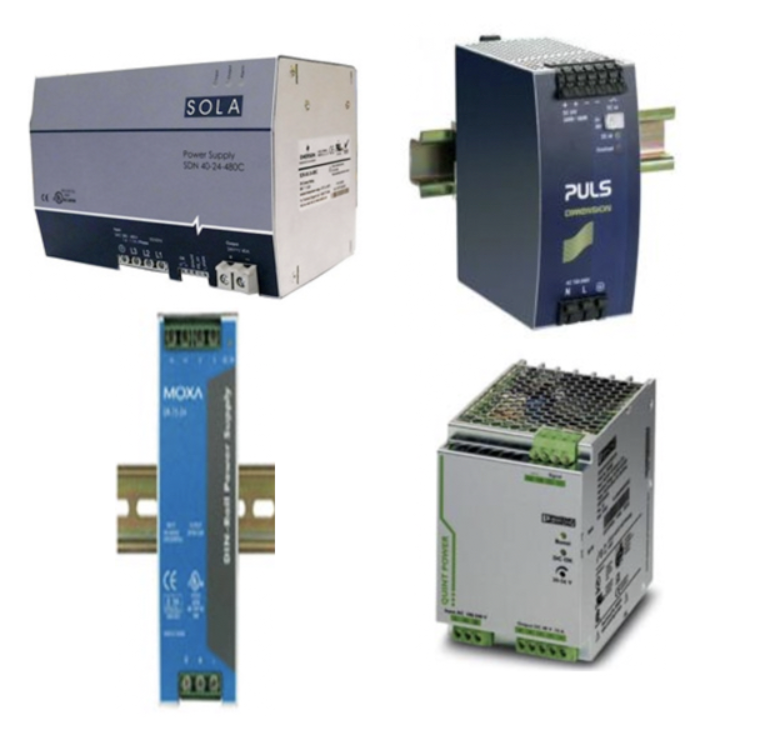Industrial Power Supplies

Industrial power supplies are devices that are used to provide power to industrial equipment. Power supplies can be used to provide power to different electrical loads. The three types of power supplies most commonly used are: unregulated power supplies, linear power supplies and switching power supplies.
Unregulated power supplies have a chance of negatively impacting circuits and devices that are connected to them. This can occur when an unregulated input voltage experiences some kind of change. This will be reflected in the output voltage resulting in electrical noise. Many plug-in wall outlets are unregulated power supplies.
Linear power supplies receive an AC input, steps down the voltage with a transformer, then rectifies and filters the input to produce a DC output. Although linear power supplies tend to be large and less efficient, they are still widely used where low noise and good regulation are required. They can be found in communication and medical equipment, signal processing, control circuits and industrial applications.
Switching power supplies incorporate a switching regulator to convert electrical power efficiently and can either step up or step down the input voltage to produce the desired output voltage. Compared to linear power supplies, switching power supplies produce more noise and are more expensive, however, they are smaller, more efficient and are capable of higher outputs. They can be found in high power and high current applications, manufacturing and testing, waste treatment and DC motors.
FAQs
What are 24V power supplies used for?
A 24V power supply is commonly used in various industrial, commercial, and residential applications to convert input electrical power to a consistent 24-volt output. Here are some common uses and applications for a 24V power supply: Industrial Control Systems, Communication Systems, HVAC Systems, Security Systems, Battery Charging and Home Appliances.
How to Select and Size a Power Supply
A power supply alters power from one type to another and ensures that the voltage being delivered is the proper level, with the right characteristics, to enable equipment to function properly.
Power rating
If a power supply is rated for 5 amps at 24 VDC, (where voltage times amperage equals total wattage) the power rating for that power supply is roughly 120 Watts. This rating is very important because if this number is exceeded, it can cause a failure of the power supply and potentially damage other hardware wired downstream or on the load side of the device. To avoid this failure is important that the power supply is sized correctly.
Sizing a power supply
To properly size a power supply, identify what devices will be reliant on the power supply and what their total power consumption will be. The sum of all power to be delivered needs to be less than the total power rating of the power supply. For example, if the devices combined for a total of 100 Watts, then a 5 AMP power supply, which is rated for up to 120 Watts, would be sufficient. However, if the sum of those devices’ total power requirement is greater than that of the power supply rating, then a different power supply should be selected. It is important to allow for a buffer or safety factor. When sizing a power supply, never select a power supply that is rated for the same amount of power as the total power requirement of all of the devices. Oversizing the power supply will allow for changes and additions that may occur in the future.

